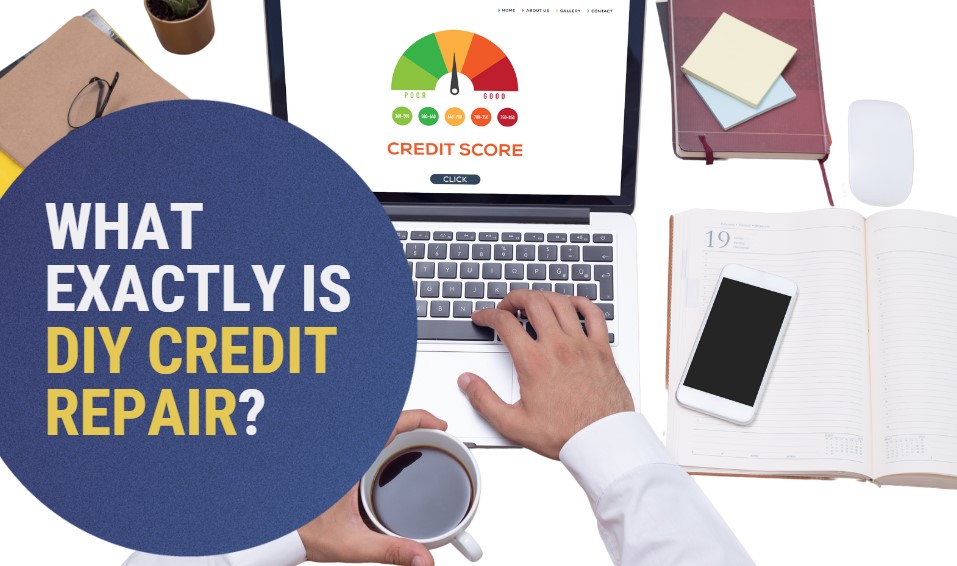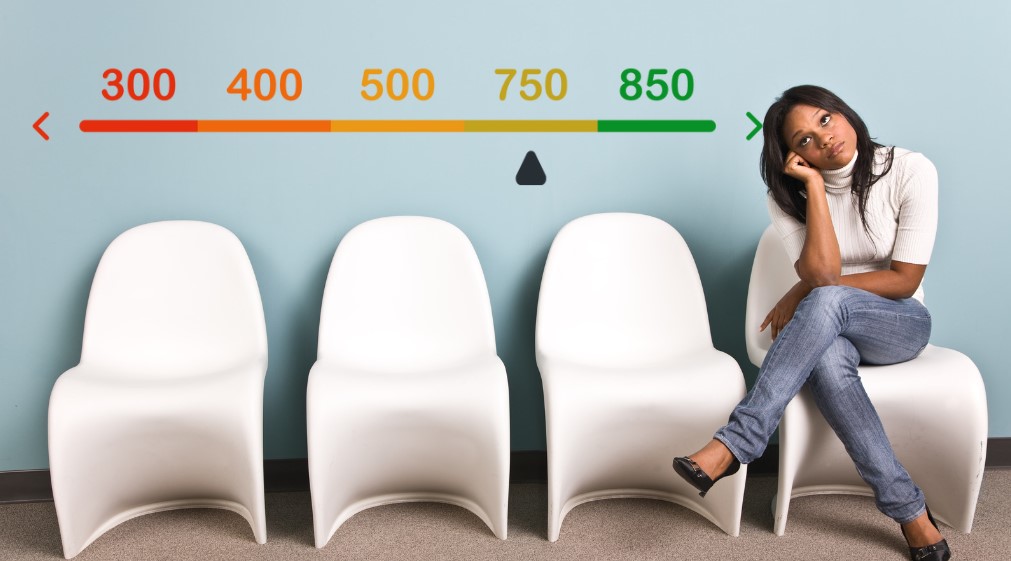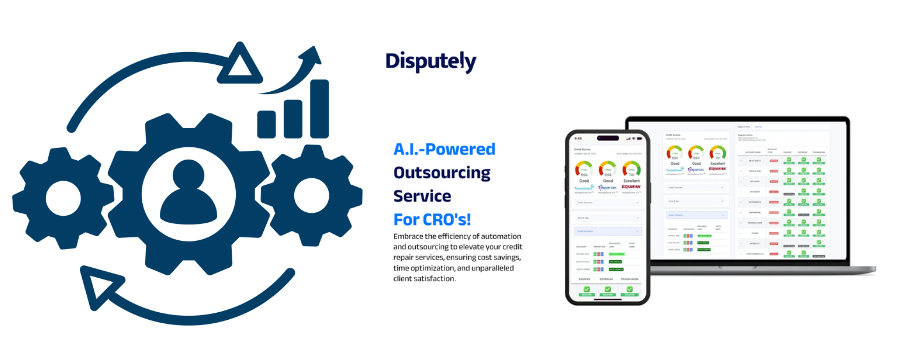
How Effective Is DIY Credit Repair
Let me take you back for a second.
Years ago, I was broke. Staring at bills, wondering if I'd ever get out of debt. My credit score? Not something I wanted to talk about. But I’m here to tell you that climbing out of that hole was one of the hardest but most rewarding journeys of my life. And I didn’t do it with expensive lawyers or credit repair companies. I did it myself. DIY credit repair.
You might be in the same boat. You’ve probably seen the ads that promise to wipe your credit clean for a fee. But maybe, just maybe, you’re wondering if you could do it on your own.
So, let's talk about that: Is DIY credit repair really effective?
What Exactly is DIY Credit Repair?

Simply put, DIY credit repair is taking control of your credit without relying on a credit repair service. It’s all about learning how to remove negative marks from your credit report, negotiate with creditors, and ultimately boost your credit score.
But here’s the thing: It’s not magic. There’s no secret formula or overnight fix. It requires patience, diligence, and some basic know-how.
According to the Federal Trade Commission, you can do everything a credit repair company can do. That’s right. There’s nothing they do that you can’t do yourself—except they’ll charge you a hefty fee for it. Credit repair companies often charge between $500 to $1,000 for services that you can do at home for free or a few bucks at most.
Here’s another kicker: Under the Fair Credit Reporting Act, you have the right to challenge inaccurate or outdated items on your credit report. It’s your legal right. So, why not take control of the process?
But…Is Do It Yourself Credit Repair Effective?

Here’s where the rubber meets the road.
Yes, DIY credit repair is effective, but it depends on how committed you are to the process. Let’s look at some numbers.
Consumer Survey Findings: According to a 2023 survey by the Consumer Financial Protection Bureau (CFPB), over 40% of Americans who actively monitor their credit report and correct errors see a 20 to 40-point increase in their credit score within six months. That’s just by fixing inaccuracies and keeping tabs on your credit.
The Impact of Payment History: Payment history accounts for 35% of your FICO score. By ensuring your payments are on time and negotiating the removal of past delinquencies, you can drastically improve your credit profile.
Disputing Errors on Your Credit Report: Around 79% of people who file disputes for inaccuracies on their credit report experience some positive changes in their credit score. It might not be massive, but even a slight bump can make a world of difference when you’re trying to get better interest rates on loans.
The numbers don’t lie: Do it yourself credit repair can work. But let’s be honest—like any personal finance journey, you have to be consistent and stay on top of things.
How to Do DIY Credit Repair in 5 Simple Steps

Let's get practical. If you're serious about fixing your credit, here's how to do it on your own. Roll up your sleeves, because there’s some work involved, but it’s definitely worth it.
Get Your Credit Reports Start by getting a free copy of your credit report from the three main credit bureaus: Equifax, Experian, and TransUnion. You’re entitled to one free report from each bureau annually via AnnualCreditReport.com. Tip: You can pull one every four months to stay on top of changes. Trust me, the more you monitor it, the more control you have over your financial destiny.
While there are plenty of paid services that will track your credit for you, free resources like Credit Karma or Credit Sesame can help keep you informed without the fees.Look for Errors and Dispute Them You’d be surprised how often credit reports contain errors. It could be a simple mistake like a wrong address or something more serious, like a late payment listed that you didn’t make. The Federal Trade Commission reports that 1 in 5 people find an error on their credit report.
Dispute these errors with the credit bureau. They’re required to investigate your claim within 30 days. You can do this online or through mail by providing documentation supporting your claim.
But here’s the kicker: Don’t expect them to act on your first request. Often, disputes take time and persistence. It took me about three rounds of disputes to finally get a false account removed from my report. Stick with it!Negotiate with Creditors This is where things can get tough. Contact creditors directly to negotiate payments or request the removal of negative marks like late payments or charge-offs. It’s called a "pay for delete" agreement. Not everyone will agree, but it’s worth a shot, especially for old debts that are in collections.
Let me give you an example. Say you have an old credit card debt that’s been sold to a collection agency. You could offer to pay a portion of the debt in exchange for them removing the negative mark from your credit report. According to a report by the National Foundation for Credit Counseling, about 40% of collection agencies are open to negotiations like these.Pay Down Debt Strategically This step is probably the most straightforward but still crucial. Focus on reducing your credit utilization ratio, which is the amount of credit you’re using compared to your limit. Keeping this ratio below 30% can significantly improve your score.
If you’ve got multiple credit cards, focus on paying off the ones with the highest interest first. Or, try the debt snowball method, where you tackle the smallest balances first. Whichever works best for your financial situation.
The idea here is to show future creditors that you can handle credit responsibly. The lower your balances, the better it reflects on your creditworthiness.Build Positive Credit Habits Do it yourself credit repair isn’t just about removing the bad. You also need to create good credit habits. Make payments on time, avoid taking on too much new debt, and keep your old accounts open to lengthen your credit history.
Did you know that 35% of your FICO score is based on your payment history? That’s huge! A single late payment can drop your score by 90 to 110 points if your credit is in the fair or good range, according to FICO reports. Consistently paying your bills on time is the fastest way to repair and build your credit.
How Long Does It Take to See Results?

Here’s what no one tells you: Credit repair takes time. If you’re looking to boost your score by a significant amount, expect a 3 to 6-month window before you see noticeable changes. Some people even see positive shifts in as little as 30 days if they successfully dispute errors on their report. But remember, consistency is key.
Here’s what worked for me: I set small milestones and checked my credit report every month. By doing this, I could see the incremental changes happening, which kept me motivated to stay on track.
DIY vs. Hiring a Credit Repair Service

Let’s face it. DIY is not for everyone. Some of us are busy, or we just don’t have the patience to sit on the phone with credit bureaus. That’s where credit repair companies come in. But you need to be careful here.
A study by the National Consumer Law Center found that many credit repair companies charge exorbitant fees and often can’t deliver on their promises. Worse, some are outright scams. The truth is, these companies can’t do anything that you can’t do yourself. It’s not about secret tactics—it’s about putting in the work.
Most of the time, companies will offer to dispute errors on your behalf, or they’ll promise to remove negative marks for a fee. But remember: Under the law, you have the right to do all of this for free. So, unless you’re drowning in errors and have no time to spare, DIY credit repair is usually the more cost-effective route.
Common Myths About DIY Credit Repair
Let's debunk a few myths.
Myth 1: Credit repair is illegal
Not true. Disputing errors or negotiating with creditors is your right under the Fair Credit Reporting Act.Myth 2: Closing old accounts will improve your score
Actually, closing accounts can hurt your score because it shortens your credit history. The longer your credit history, the better your score.Myth 3: You need to pay off all your debt to improve your score
While paying off debt is important, what really matters is your credit utilization and payment history. It’s possible to have a good score even if you carry some debt—as long as it’s managed wisely.Myth 4: All negative information stays on your credit report forever
Wrong again. Most negative marks, like missing a payment and collections, will drop off your report after seven years. However, bankruptcies can remain for up to 10 years.
What Do People Say About DIY Credit Repair?

Here’s a fun fact: People who handle their own credit repair tend to feel more empowered financially. In a survey conducted by Lexington Law, 68% of respondents who chose the Do It Yourself route reported feeling in control of their finances after six months of actively improving their credit.
It’s not just about fixing your credit; it’s about understanding how it works. Once you understand credit, you’re in the driver’s seat for life.
The Bottom Line: Is DIY Credit Repair Worth It?

Absolutely. It’s not the fastest solution, and it takes a bit of patience, but if you’re willing to put in the effort, DIY credit repair can be just as effective as hiring a professional—without the high fees. You have the power to take control of your credit.
Start today. Get your credit reports. Look for errors. Negotiate with creditors. And build better habits. The key is taking action and sticking with it. Don’t let anyone tell you that you need to pay for something you can do yourself.
To make things easier, consider using Disputely, a powerful credit repair software that streamlines the process for you. With Dispute.ly, you can easily dispute errors, track your progress, and get back on the path to better credit—all from the comfort of your home. Ready to take charge? Start repairing your credit with Disputely now!
